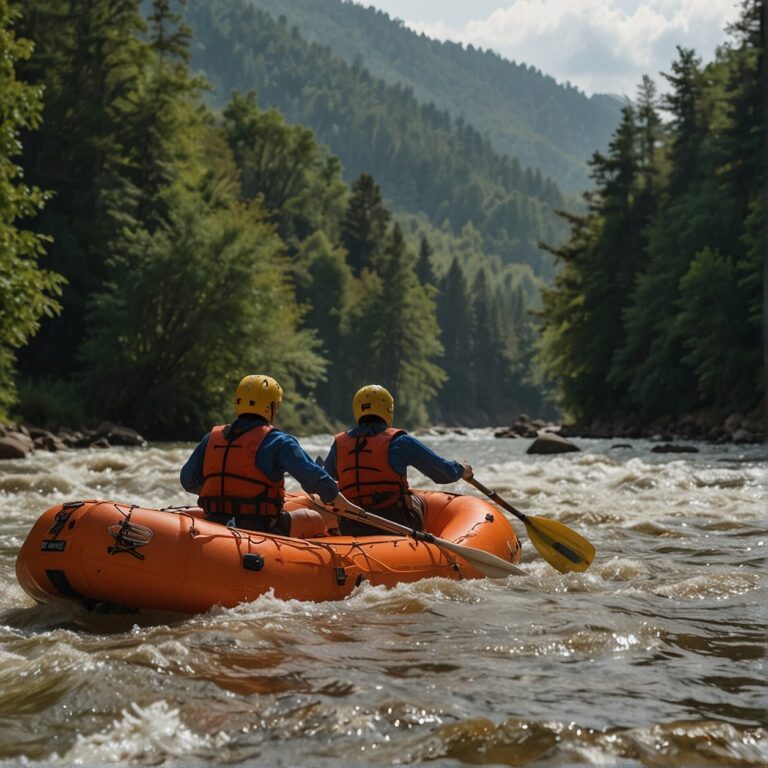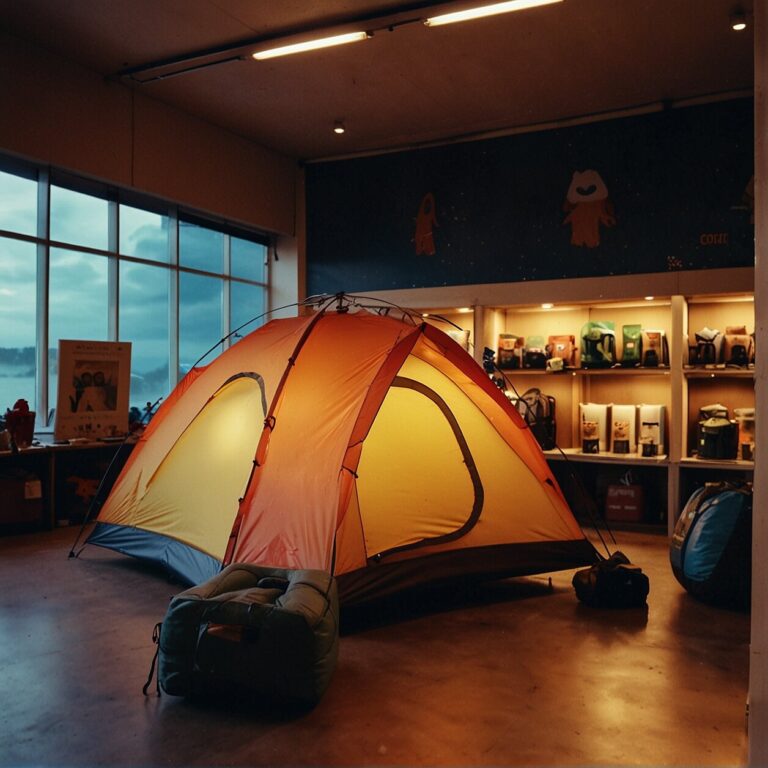Exploring the Art of Working From the Great Outdoors: Tips and Tricks
Are you craving the thrill of adventure, yet tied to your screen-demanding job? Fear not! This extensively researched guide is tailored specifically for the likes of you – the digital nomads, the remote workers, the adventure seekers who can’t just lock up shop and hit the road. If you’ve ever dreamt of swapping out the hum of your office AC for the chirping of birds, or trading harsh artificial light for the soft glow of a sunset, we’ve got you covered. You absolutely can have the best of both worlds.
“Adventure is worthwhile in itself.” – Amelia Earhart. But can adventure and work co-exist harmoniously? We believe they can, and we’re here to help you strike that careful balance.
In this comprehensive guide, we’ll address everything from setting up your seamless mobile office in open skies, to choosing the right gear, to triumphing over connectivity challenges in the remotest corners of the world, to keeping your productivity levels high despite the allure of adventure. In addition, we’ll help you master the art of mindful scheduling so you can juggle work and exploration with ease. So here’s to merging work and wanderlust – because why should you have to choose?
Embracing the Great Outdoors: Setting Up Your Mobile Office
Striking a balance between being efficient in your job and feeding your adventurous spirit requires a well-thought-out mobile office setup. Think of it as capturing the coziest corner of your home office or your favorite coffee shop booth and bringing it to the great outdoors. That’s what you’d want to achieve, right?
Finding the perfect spot to set up your mobile office is crucial. Ideally, you’ll want a location that offers a natural shade, a flat working surface, and relatively quiet surroundings. Being in nature doesn’t mean you have to sacrifice comfort. Bring outdoor cushions or chairs to make your that your work space is as comfortable as possible. After all, who says you can’t be productive while lounging in a hammock?
It also helps to have a backup plan in case the weather turns sour. An open-sided tent or a large umbrella can offer immediate shelter and allow you to continue working without interruption. A practical tip is to set up your workspace near your tent (if you’re camping), so you can easily move your gear in case of unexpected weather changes.
You might be asking, “what about power?” Well, outdoor power requirements can indeed be challenging, but they’re not insurmountable. Investing in good quality power banks, solar chargers, and portable generators can keep your gear running. However, it’s also strategically beneficial to arrange your work in a way that limits the need for power. Performing tasks that don’t require a lot of battery power while you’re outdoors and saving the more power-intensive tasks for times when you have reliable access to electricity could be a smart arrangement.
Oh, and let’s not forget safety—especially if you’re in more remote or wild settings. Keep a first-aid kit handy, stay aware of your surroundings, and make sure someone knows where you are. After all, an outdoor office is about marrying work and adventure, not inviting unnecessary risk. Remember, the objective is to harmonize your love for the outdoors with your work commitments, not to ignore one in favor of the other.
Choosing the Right Gear for Your Outdoor Workstation
Adventure and work are not mutually exclusive – with the right tools and preparation, you can seamlessly integrate both. Choosing the right gear for your outdoor workstation is a crucial step in ensuring a successful work-and-travel lifestyle.
Let’s start with the basics – your computer. Investing in a durable, lightweight laptop with a long battery life is a game-changer. You want a device that can endure the trials of outdoor work while still packing enough power for your work needs and managing energy efficiently. Consider features such as water and dust resistance for added protection against the unpredictable conditions that come with outdoor locations.
Next up, think about power. Working off the grid can be freeing, but power is still a necessity. A reliable portable charger or a solar-powered battery pack can be your lifeline during extended periods of remote work. Make sure to invest in one that’s capable of charging all your devices, not just your laptop.
Connectivity is another key consideration when setting up an outdoor workstation. Consider purchasing a mobile Wi-Fi or hotspot device that’s compatible with your services provider. While these devices can’t guarantee a connection everywhere, they significantly improve your chances of staying connected.
Don’t forget protection. A sturdy laptop case or backpack that can withstand the elements is a necessary addition to your gear list. Remember, protecting your devices from severe weather or accidental spills will be worth every penny spent.
Last but not least, consider your workstation setup. You might not have a traditional desk, but that doesn’t mean you can’t have a comfortable workspace. Portable and compact travel desks or lap desks can provide a flat work surface. Pair it with a lightweight, foldable chair, and you’ve set yourself up for productive work amidst the great outdoors.
Finding the right gear is a unique process for everyone. Consider your specific work requirements, the nature of your adventures, and your personal preferences. Ultimately, the goal is to create a workspace that allows you to perform your job efficiently while enjoying the thrill of life on the road.

Staying Connected: Overcoming Connectivity Challenges in Remote Locations
Staying connected while venturing into the remote outdoors can seem like a daunting task. However, by employing some smart strategies, you can overcome connectivity challenges effectively.
Portable Internet devices: Invest in a reliable and portable internet device such as a mobile hotspot or a Wi-Fi dongle. These devices allow you to take your internet connection with you wherever you go, ensuring you stay connected even in remote locations.
Data plans: Having the right data plan is crucial. Aim for plans that provide ample data, preferably with unlimited usage. Check with your service provider for their roaming and data policies in different regions to avoid hidden charges or data capping.
Backup solutions: Don’t put all your connectivity eggs in one basket! Always have a backup solution like a secondary device or another SIM card. In case your primary data fails or if you are exhausting your data, your backup solution will come to your rescue.
Satellite communication devices: When the normal network infrastructure fails you, satellite communications can save the day. Satellite phones or satellite messengers can provide a lifeline with both voice and data capabilities. However, keep in mind that these devices can be expensive and sometimes require subscription services.
Coordinate work around connectivity: Lastly, coordinate your work schedule around the best connectivity. Look for areas with the best signal and do your high-bandwidth tasks (assume video calls or big file downloads) during these times. It’s smart to schedule your offline tasks during the times when connectivity is low.
Remember, there can be instances where you might encounter unexpected network issues. These suggestions will not only prepare you but also assure you that connectivity while working in remote settings is achievable!
Productivity Tips for the Adventurous Remote Worker
For workers embracing the adventurous spirit of outdoor remote work, productivity is often a pressing question. Rest assured, we have a few practical tips for resurrecting and maintaining productivity in the midst of your adventures.
First and foremost, take into account the importance of setting clear boundaries. When your tent doubles as your office, it’s easy for work to bleed into playtime and vice versa. Allocating specific hours for work, while keeping them separate from exploration and relaxation time, is crucial. This might look like working during the cool morning hours, leaving the heat of the day for your adventures. Or perhaps scheduling work during the evening when camp is set and you can work by the light of a lantern or campfire.
Arriving ready with a well-defined task list is another golden rule. Organize your tasks ahead of time with an online project management tool or simply use a notepad. Prioritize based on deadlines and the level of concentration each task requires. High-focus tasks are best handled during your peak productivity hours while the less rigorous ones can be assigned to your low energy periods.
Always remember that breaks are your best friend. The Pomodoro Technique, which advocates for 25 minutes of concentrated work followed by a short break, is a fantastic approach to avoid burnout. Treat these breaks as opportunities to engage in micro adventures, like a brief hike or a quick swim.
Finally, celebrate your small victories. Checking off tasks can trigger the release of dopamine, a neurotransmitter associated with feelings of achievement and motivation. By acknowledging your progress, no matter how small, you are fueling your motivation dynamically.
Juggling work and adventure isn’t always a walk in the park, but with the right tactics and a flexible mindset, not only is it achievable, but it can also bestow you with some of the most enriching experiences.

Mindful Scheduling: Juggling Work and Exploration
When you’re pursuing the adventurous lifestyle alongside a demanding job, creating a well-structured schedule is paramount. In order to achieve a successful synergy between your professional responsibilities and your desire for exploration, plans should be more than just a list of tasks – they should function as strategic guides to optimum work-life balance.
Consider starting by making a weekly plan. Start each week by identifying work tasks that need your attention and the outdoor activities you hope to enjoy. Divide your daily schedule into different parts, allocating specific time blocks for work and personal pursuits. This way, instead of getting caught up in work and realizing there’s no time left for outdoor adventures, you’ll have preplanned exploration periods to look forward to.
However, while planning is essential, rigidity might prove to be counterproductive. Flexibility is crucial when working remotely, particularly in an outdoor setting. The weather might not always cooperate, or unexpected work emergencies might require your attention. The ability to adapt and rearrange your plans when necessary can be a significant asset.
Beyond scheduling, luck also plays a large part in the pursuit of work and adventure. With the right measure of diligence and a dash of luck, you might find positions that allow for remote work and schedule flexibility. Jobs that align with your interests can make transitioning between work and adventuring easier and seamless.
Remember, the goal is achieving a gratifying balance between work and the joy of outdoor adventures. It’s a challenging feat, but once mastered, it can drastically enhance your overall life experience. You will find your workday increasingly more productive and your leisure time significantly more refreshing.
Finding the Perfect Hobby to Complement Your Work
Identifying a hobby that complements your career is another effective way to heighten job performance and satisfaction, while ensuring that you remain engaged with outdoor activities. Start by assessing your interests, and then identifying skills you already possess that can be both professionally valuable and enjoyable in a leisurely setting. Set realistic goals and engage in a phase of trial and error before zeroing in on your preferred pastime. Be it something as peaceful as bird-watching, or as adrenaline-pumping as rock-climbing, the right hobby can serve as the perfect counterbalance to your professional life, ensuring you of a fulfilling and balanced work-adventure life.
FAQ’S
Now that we’ve guided you through balancing work and adventure on the go, you probably have some lingering questions. That’s why we’ve put together this FAQ section. Here, we’ve addressed some of the most common inquiries we receive about managing professional responsibilities in an outdoor, remote environment. Armed with this knowledge, we hope to further empower you to seamlessly merge the demands of work with the thrill of exploration.
What are the best tools for working remotely outdoors?
When it comes to working remotely outdoors, you need some specific tools to ensure productivity and continuity. These may vary according to your job requirements, but certain universal items can make your workday smoother. Digital gadgets: A laptop or tablet, preferably lightweight for easy transportation, is essential. Keep in mind the battery life since you might not always have access to power outlets. Power bank: A portable charger can be lifesaving when your device’s battery runs low. Always have a backup power source just in case. Portable Wi-Fi: Consider buying a separate mobile hotspot or ensuring your phone can act as one in case of no Wi-Fi environment. Weather-resistant cases: These keep your devices safe from dust, moisture, and accidental drops, a must-have for outdoor remote work. Portable desk and chair: Having comfortable seating and a sturdy surface makes work much more manageable.
How can I maintain a healthy work-life balance while traveling?
Maintaining a healthy work-life balance while traveling, particularly in remote outdoor settings, requires some thoughtful strategizing. But fret not, it is doable! Start by creating a clear and well-thought-out schedule to outline your work hours and allocate time for adventure and relaxation. You can use digital tools like Google Calendar or more traditional methods, such as a planner or notebook, to create your personalized roadmap.
Consider setting boundaries to differentiate work time from personal time. This can mean setting specific hours during which you’ll be ‘at work,’ even while surrounded by tempting outdoor vistas. Make use of productivity apps that track work hours and remind you to take breaks. Those breaks are the perfect time for a quick exploration around your area!
Furthermore, leverage the flexibility that comes with remote work. If you find that you are more productive during a certain part of the day, structure your schedule to reserve those hours for work. This flexibility can help you take full advantage of your location, allowing you to explore when crowds are smaller or weather is at its best.
Ensure that you take adequate time for other passions. Be it hiking, trekking, photography, or even reading a book by the bonfire, engaging in these activities helps you unwind and makes you more productive during work hours. Remember, all work and no play isn’t good for anyone!
Above all, it’s vital to recognize and respect your individual needs for rest and relaxation. Avoid the temptation to overwork just because your office is now mobile. After all, the whole point of this setup is to enjoy the richness of both work and adventure.
What are some effective strategies for working in remote outdoor settings?
Embracing the remote outdoor work setting comes with unique challenges and triumphs. To navigate this journey effectively, consider utilizing the following strategies:
Establish a Routine: Although flexibility is an integral part of outdoor remote work, having a semblance of routine can contribute to productivity. Knowing when you’re at your peak performance and scheduling for those times helps to maintain focus and output.
Prepare for the Elements: Being in tune with the weather and understanding how it could influence your tasks is crucial. Staying weather-aware can help you schedule your work and outdoor activities to align with ideal conditions, offering the best experience both at “the office” and in your adventures.
Stay Organized: In outdoor settings, organization is not only productive, it’s therapeutic. Keep your equipment readily available and designated for easy access. This reduces wasted time hunting down items and makes your workspace feel more professional.
Set Boundaries: Even amidst the splendid isolation of nature, it’s important to create boundaries between work and adventure. This might mean setting “office hours,” or having a physical distance between your workspace and relaxation zone. It’s easier to stay focused on work when there’s a clear division between ‘work’ and ‘play’.
Embrace Disconnectivity: Cellular service or Wi-Fi might not always be reliable. Instead of viewing this as an issue, see it as an opportunity to focus on tasks that require more concentration and less online connectivity. Always have a backup plan for if and when your connectivity dwindles.
Remember, successfully working in remote outdoor settings involves more than just getting tasks done. It’s about striking a balance between productivity and the relaxing tranquility nature generously offers.
How can I protect my devices from the elements when working outdoors?
Shielding your devices from harsh outdoor conditions is essential when setting up your adventurous outdoor workplace. A few practical steps can go a long way in extending the lifespan of your gadgets while ensuring optimal performance, no matter where you might be.
First on the list, it’s prudent to invest in high-quality protective cases for your devices. Waterproof, dust-proof, and shock-resistant cases can withstand accidental drops, rain showers, and the rigors of travel. For your laptop, consider a rugged, yet portable, laptop case. For phones and tablets, go for cases that not only protect the device but also the screen.
Secondly, think about temperature control. Electronic devices can overheat in extreme sunshine or malfunction in freezing temperatures. Avoid exposing them to direct sunlight for prolong periods and ward off cold weather by keeping devices in insulated pockets when not in use.
When it comes to power, an investment in solar panels or portable chargers can ensure you never run out of juice even in the most remote locations. Also, remember to backup your data as physical damages could lead to devastating data loss.
Lastly, it’s important to always clean your devices after use in outdoor settings. Wiping them down with a microfiber cloth helps remove unwanted dust and residues that might compromise your device’s functionality.
By considering these measures, you can not only protect your gadgets but also make your outdoor working experience smoother and more rewarding.
What are some challenges of working remotely outdoors and how can I overcome them?
Working remotely in the wilderness is an exciting prospect; however, it does come with its fair share of challenges. Some of these hurdles may include fluctuating weather conditions, inconsistent internet connectivity, managing your energy sources, and striking a harmonious work-pleasure balance. Yet, each of these comes with a pragmatic solution.
Fluctuating weather conditions pose the most immediate threats. Sudden downpours, scorching heat, or chilling wind can disrupt your workspace. Dressing in layers is a helpful solution, allowing you to add or remove clothing as necessary. Investing in a water and wind-resistant cover for your mobile work setup can safeguard your gear and ensure continued productivity regardless of weather changes.
Often, remote locations are synonymous with erratic or non-existent internet connectivity. A reliable and high-speed mobile hotspot can help bridge this gap. Look for satellite-based options that work virtually anywhere in the world. Your phone might also serve as a backup hotspot, but make it a point to conserve your phone’s battery for emergencies.
Managing power sources for your equipment is another concern. Extended battery packs or solar-powered chargers are invaluable for maintaining power supply. Many of these offer USB ports for wide-ranging compatibility with various devices. As an added tip, always bring along additional power sources than you think you’ll need. Running out of power can put an abrupt halt to your work.
Lastly, it’s easy to get caught up in the stunning landscapes around you and lose track of work. Allocate specific hours for work each day, and stick to them. Use your surroundings as a source of motivation rather than distraction – look forward to exploring that mountain range or scenic trail after hitting your work targets for the day.
Identifying and meeting these challenges head-on can pave the way for an enriching work-travel experience in the great outdoors. It’s about turning potential obstacles into opportunities, and leveraging the unique benefits that remote outdoor work offers.







